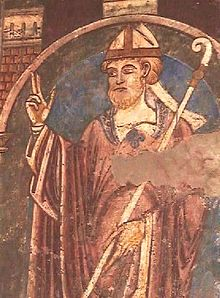St Cuthbert

St Cuthbert
Monk and bishop. Cuthbert was an Anglo-Saxon saint of the early Northumbrian church in the Celtic tradition. Tradition says he was born in 634, in Dunbar.
Bede writes that as a young shepherd boy by Leader Water, he saw a vision of angels taking the soul of St Aiden to heaven. Later he became a monk under St Eata at Melrose. For years he undertook long journeys on horseback and on foot, ministering to the remotest parts of the country between Berwick and Galloway, and keeping the spirit of Christianity alive in them. In 664 he accompanied St Eata to Lindisfarne and extended his work south to Durham.
By nature he was a solitary and in 676 he retired to Farne where he lived until 685 when he was called to be bishop of Hexham. He quickly swapped his see with Eata for that of Lindisfarne where he worked very hard, devoting himself to his people, preaching, helping with alms and visiting every part of the large diocese.
St Cuthbert had keen powers of observation and particularly liked animals and birds. He also developed a reputation as a healer - once curing a sick baby with a kiss. Many contemporary sources describe him as a man of charm and ability who attracted people deeply by the beauty of holiness.
Bede often refers to him as 'the child of God'. His episcopacy only last two years. When he felt death approaching in 687 he withdrew to Farne and died there one night. The news was signalled to the community at Lindisfarne by torches waved from the clifftops. He was buried at Lindisfarne.
When the Viking raids began, his body was removed to their final resting place in Durham Cathedral. Bones discovered in 1827 beside a mediaeval shrine there are thought to be his.
His feast days are 20 March (Catholic Church and Church of England), also 31 August (Episcopal Church (USA)) and 4 September (Church in Wales).












